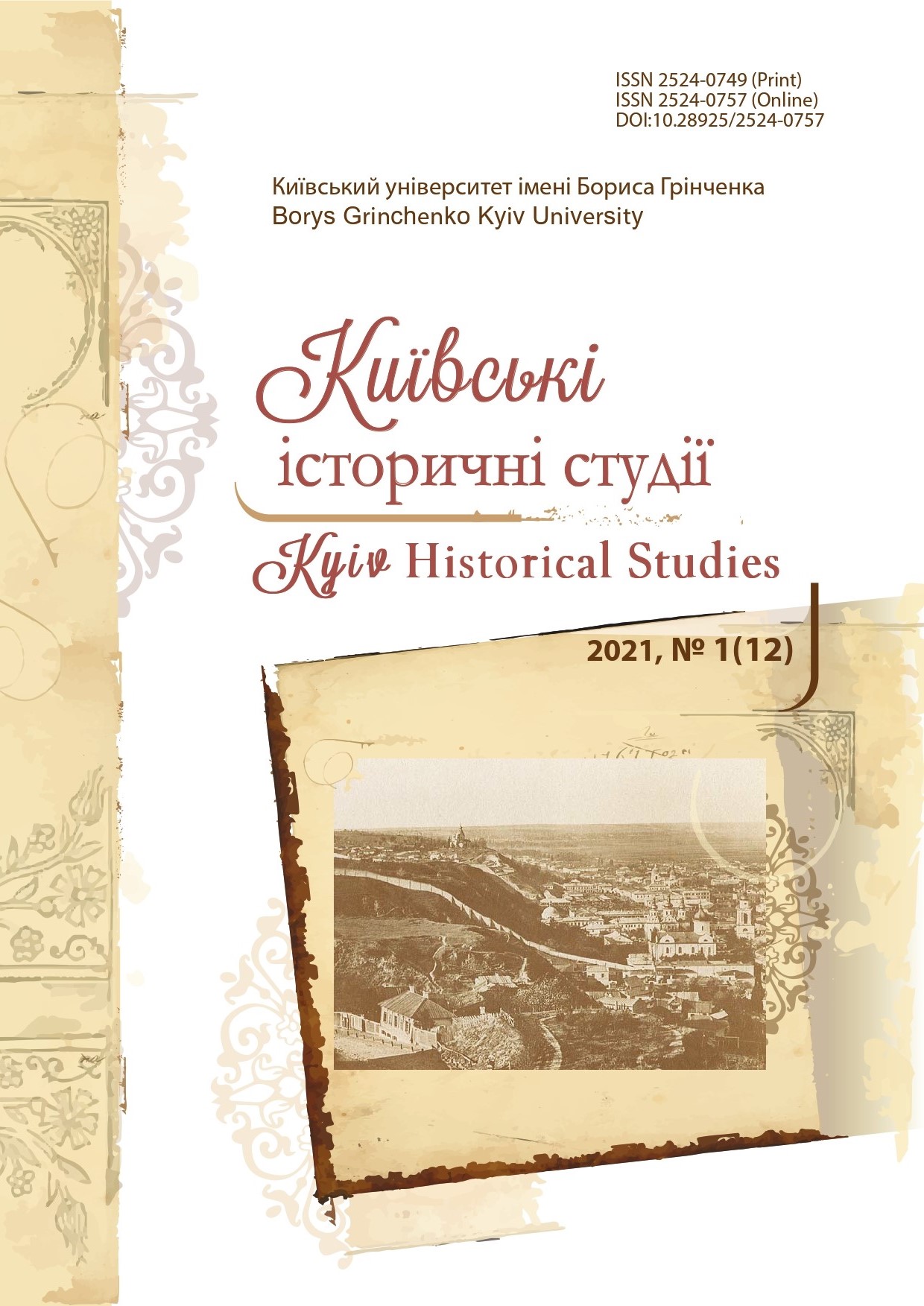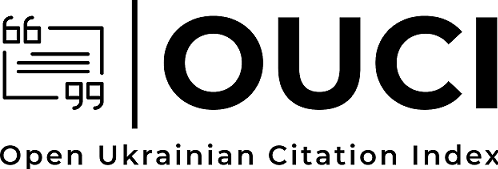The Image of Ukraine in Great Britain during 1919–1920s
DOI:
https://doi.org/10.28925/2524-0757.2021.13Keywords:
Great Britain, image of Ukraine, A. Margolin, G. Mackinder, W. Churchill, D. Lloyd-GeorgeAbstract
The article examines the evolution of the image of Ukraine in the intellectual discourse of the British Empire immediately after the First World War, i.e., during 1919–1920s. This period was marked, on the one hand, by the continuation of the national liberation struggle within Ukraine and, on the other hand, by discussions on the post-war arrangement of Europe and the world at the Paris Peace Conference. Great Britain, as one of the victors in the war, as well as one of the most powerful states at the time, took an active part in these discussions, and the future of Ukrainian lands significantly depended on its position. Therefore, it seems interesting to trace the image of Ukraine that has developed among British intellectuals and politicians at this time, because it also made impact on the attitude of British diplomats to the Ukrainian question at the Paris Peace Conference. To achieve that goal, the article will analyze the attempts of the UPR Directory to establish contacts with British diplomats, the works of the famous British geographer and geopolitician Gelford Mackinder, the views of a prominent British statesman of the 20th century, and during 1919–1920s the Minister of War Winston Churchill, a booklet on Ukraine, issued by the Foreign Office in 1920, as well as the position of the then first man in the UK, British Prime Minister David Lloyd-George. Such a comprehensive view will provide a better understanding of the British vision of the Central and Eastern Europe region in general, and Ukraine in particular, in the context of that time.
Downloads
References
Elcock, H. J. (1969). Britain and The Russo-Polish Frontier, 1919–1921. The Historical Journal, 12 (1), 137–154 [in English]. DOI:10.1017/s0018246x00004131
Gai-Nyzhnyk, P. P. (1917). Vzaiemyny Ukrainy z Frantsiieiu і Velykoiu Brytaniieiu za Tsentralnoi Rady (1917–1918 rr.): stanovlennya і rozlad. Gileia, 124, 9, 32–43 [in Ukrainian].
Gilbert, M. (1990). Winston S. Churchill: World in Torment 1917–1922. London: Minerva [in English].
Mackinder, H. J. (1919). Democratic Ideals and Reality. London [in English].
Mackinder, H. J. (1904). The Geographical Pivot of History. The Geographical Journal, 23 (4), 298–321 [in English].
Margolin, A. D. (1946). From a Political Diary: Russia, the Ukraine, and America 1905–1945. New York [in English].
Margolyn, A. (1922). Ukraina і politika Antanty: (Zapiski yevreia і grazhdanina). Berlin: S. Efron [in Russian].
Nowak, A. (2017). Eastern Europe and the British Imperial Imagination, 1914–1919. Studia Z Dziejów Rosji I Europy Środkowo-Wschodniej, 52 (3), 181–195 doi:10.12775/sdr.2017.en3.01 [in Polish].
Nowak, A. (2020). Geopolityczne znaczenie wojny sowiecko-polskiej w 1920 roku. Dzieje Najnowsze, Rocznik LII, 1, 53–84 [in Polish]. DOI: 10.12775/DN.2020.1.03
Saunders, D. (1988). Britain and the Ukrainian Question (1912–1920). The English Historical Review, Vol. 103, no. 406, 40–68 [in English].
Sereda, O. (1999). Angliiski zviazky lvivskykh ukraintsiv naperedodni Pershoi svitovoi viiny. Lviv: misto — suspilstvo — kultura, 18, 39–48 [in Ukrainian].
Syrota, R. (2003). Brytanski liberaly. Robert William Seton-Watson і «neshсhaslyva natsiia» (Doslidzhennia z istorii proukrainskoho rukhu u Velykii Brytanii v 1919–1939 rokakh). Visnyk of the Lviv University. Historical Series, 38, 293–307 [in Ukrainian].
The Ukraine. (1920). London: Historical Section of the Foreign Office [in English].
Published
How to Cite
Issue
Section
License
Copyright (c) 2021 Андрій Міхеєв

This work is licensed under a Creative Commons Attribution-NonCommercial-ShareAlike 4.0 International License.
Authors who publish in this journal retain the right of authorship of the work and give to the journal right of first publication of this work under the conditions of Creative Commons: Attribution-NonCommercial-ShareAlike 4.0 International (CC BY-NC-SA 4.0), which allows others freely distribute the work published with reference to the authors of the original work and the first publication of this magazine.














